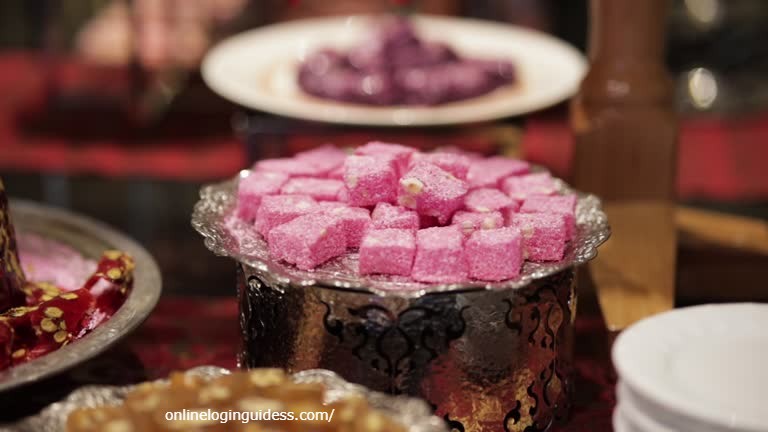Ciulioneros: Preserving Folklore and Tradition in a Modern World
Did you ever wonder how ancient traditions survive in today’s fast-paced society? The story of the Ciulioneros offers a
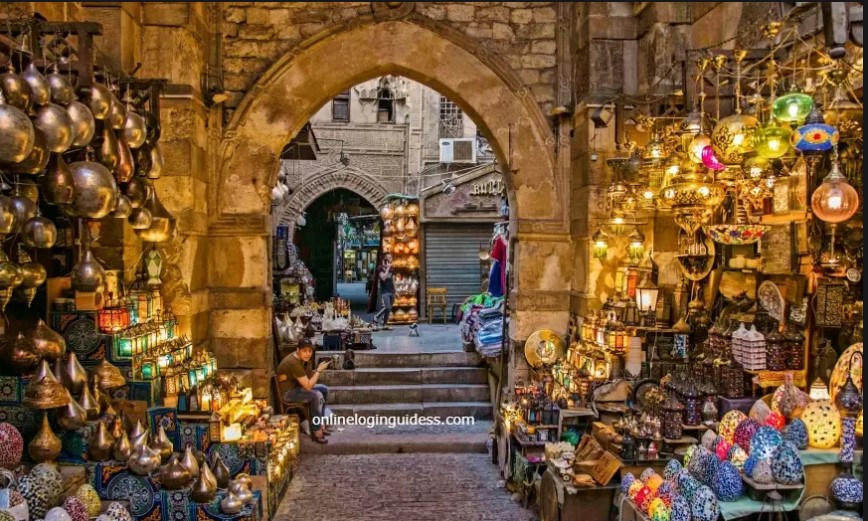
Did you ever wonder how ancient traditions survive in today’s fast-paced society? The story of the Ciulioneros offers a fascinating glimpse into this question. As I stumbled upon a colorful festival in a quaint town, filled with exuberant music and dance, I realized that heritage isn’t just about preserving the past; it’s about breathing life into it. Join me as we explore how the Ciulioneros navigate their vibrant traditions in the modern world, defying the odds and establishing a legacy.
Understanding the Ciulioneros Community
The Ciulioneros community holds a profound place in the tapestry of cultural traditions. Their origins can be traced back to an enchanting blend of ancient folklore and steadfast societal values. It’s not just a group; it’s a vibrant cultural phenomenon. You might wonder, what makes their traditions so special?
Origins and History
To understand the Ciulioneros, we must journey back into time. Their roots extend to the early days, where stories were passed down through generations. These stories are the foundation of their beliefs. Members often share personal anecdotes that highlight this rich history. Consider the tale of an elder named Doña Marisol. She recalls how her grandmother taught her the significance of the moon during traditional ceremonies. Such narratives breathe life into their heritage.
Key Cultural Practices and Beliefs
The key cultural practices of the Ciulioneros are intricate and deeply symbolic. They engage in rituals that celebrate the changing seasons and honor their ancestors. You can find them gathering during the full moon, sharing music, food, and laughter. These events are more than just rituals; they are celebrations of life and community. Don’t you think these gatherings foster a sense of belonging?
The community strongly emphasizes respect for nature. They believe in stewardship—the idea that we should take care of our environment as it takes care of us. This belief is evident in their farming practices and the stories they tell. As Gustav Mahler states,
“Tradition is not the worship of ashes, but the preservation of fire.”
This sentiment resonates deeply in the hearts of the Ciulioneros.
Storytelling: The Heart of Tradition
Finally, let’s delve into the role of storytelling. It is truly the heartbeat of the Ciulioneros culture. Through stories, they share morals, celebrate victories, and reflect on challenges faced. Each tale is not only entertaining but also a vital teaching tool. For instance, young members learn about resilience through the legend of the brave hero, Mateo, who overcame immense odds. What better way to inspire the next generation?
Through storytelling, the Ciulioneros connect with their past while shaping their future. Their practices aren’t merely historical; they remain alive, evolving with time while holding steadfast to their core values. It’s a beautiful dance of tradition and change, don’t you think?
–
Cultural Festivals: A Celebration of Heritage
Cultural festivals are not just events; they are celebrations of our shared heritage. They bring together communities, showcasing traditional practices and creating a sense of belonging. Have you ever participated in a festival? You might have felt the energy in the air, the excitement in every song sung, and every dance performed. Let’s explore some of these vibrant festivals and their importance.
Overview of Significant Festivals
One great example is the annual Ciulioneros festival. In 2022, over 5,000 people attended. This remarkable turnout reflects how much the festival means to the community. Imagine streets filled with colors, sounds of music ringing in your ears, and the aroma of traditional food wafting through the air. Festivals serve as a uniting force.
Unique Rituals and Their Meanings
Every festival has unique rituals that carry specific meanings. For instance, during the Ciulioneros festival, locals don traditional attire, symbolizing their pride and connection to their roots. Why is wearing traditional attire significant? It’s about embracing one’s identity, fostering a collective memory, and sharing stories of a culture’s past.
- Traditional Dance: Each movement tells a story, passed down through generations.
- Artisan Markets: These markets showcase local crafts, highlighting craftsmanship and creativity.
- Storytelling Sessions: Festival-goers gather to listen to tales that reflect their heritage.
Impact on Community Bonding
Festivals significantly impact community bonding. They provide a space for people to connect, share laughter, and create lasting memories. Think about the last time you attended a festival. Did you not feel a sense of togetherness? As one local resident aptly said,
“Festivals are the heartbeat of our culture, bringing us together year after year.”
These events allow individuals to step out of their daily routines and engage with their community. They foster a sense of belonging and pride in shared traditions, making everyone feel included. Festivals, in essence, transform mere spectators into active participants in a living tradition.
Cultural festivals act as a vibrant display of the Ciulioneros traditions. They uphold and preserve the essence of our heritage while inviting future generations to continue these practices. So, when you think of cultural festivals, remember, they are not just celebrations; they are the lifeblood of our heritage.
Chart: Attendance at the Annual Ciulioneros Festival
| Year | Attendance |
| 2022 | 5,000+ |
This representation emphasizes the significance of community events in previous times, illustrating how cultural festivals bring people together.
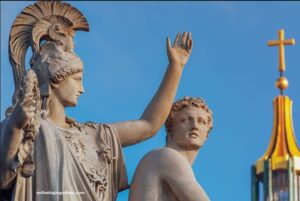
The Challenge of Modernization
In today’s fast-paced world, the impact of technology on tradition cannot be ignored. Just think about it: technology is everywhere. It shapes our lives, influences our choices, and even reaches into our cultural practices. How does this relentless wave of modernity affect the way we preserve our traditions?
Impact of Technology on Tradition
Technology can be both a friend and a foe to cultural practices. On one hand, you have social media, which acts as a double-edged sword. It helps spread awareness and appreciation for various traditions but can also dilute their significance. For instance, platforms like Instagram allow for storytelling. Young people share their customs and culture with a global audience. But is that truly preserving the essence? Or does it turn age-old practices into mere trends?
Balancing Modern Life with Cultural Practices
This leads us to the question: how do we find a balance between modern life and cultural practices? Many individuals, especially the youthful, are stepping up. They blend traditional customs with contemporary lifestyles. It’s fascinating to see young artisans creating modern designs inspired by ancient crafts. This way, they make age-old traditions relevant to today’s society.
- Young chefs updating traditional recipes with modern twists.
- Artists merging traditional art forms with digital techniques.
- Musicians blending classical sounds with contemporary genres.
These examples show how one can embrace change while still embracing heritage. But the real challenge remains: how do you retain your identity amid evolving surroundings?
Embracing Change While Retaining Identity
It’s about finding your core and understanding what truly matters. You can ride the wave of modernity without losing sight of your roots. Many young individuals today reinterpret traditions and bring them into the present. Consider the Ciulioneros community; their traditions, once at risk, are now experiencing a revival. As modern life encroaches, they are discovering ways to honor their past while adapting to the present.
As a cultural expert once stated,
“In a world where everything is fleeting, our traditions are what ground us.”
This sentiment rings true. The challenge of modernization isn’t just about technology. It’s about holding on to what defines us while navigating through the ever-changing landscape.
So, what will you do? How will you contribute to preserving your legacy amidst this relentless forward march? The journey isn’t just yours; it’s collective. Together, we can cherish our culture in a modern world.
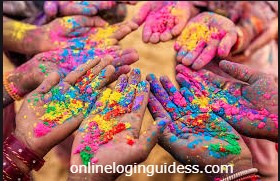
Storytelling: The Essential Thread of Tradition
Storytelling is more than just a pastime. It’s a vital thread in the fabric of any culture. You may wonder why oral traditions hold such significance. The truth is, they connect us to our past, our ancestors, and each other. As a *folklorist* once said,
“Every story is a thread that weaves us closer together.”
Importance of Oral Traditions
Oral traditions serve several critical purposes:
- Cultural connection: They keep the history alive.
- Community bonding: They bring people together.
- Teaching values: They impart lessons to the younger generation.
Through storytelling, elders pass down wisdom. This isn’t just about facts; it’s about feelings and experiences. Think about it: when was the last time you heard a story that changed your perspective? Stories can shape beliefs and encourage empathy.
How Stories Evolve Over Time
Stories are not static. They transform. They adapt to fit new contexts and audiences. One night, around a fire, you might hear how an ancient hero fought dragons. The next, that same story could evolve into a modern tale of personal struggle. Isn’t it fascinating how narratives can change yet still convey the same essence? They are mirrors reflecting our changing values and insights.
As stories are retold, elements may be added or omitted. This process can help them resonate with younger audiences. They evolve like organisms, taking on new forms to survive in the present landscape.
Personal Narratives from Community Members
Let’s look at real lives and their stories. Among the Ciulioneros, *community members share personal narratives* that resonate deeply within the community. Take, for example, Maria, a grandmother who recounts tales of her youth. For her, these stories aren’t just entertainment; they’re keys to understanding her family’s history.
These narratives foster a sense of belonging. They remind you that your experiences may be different, but the core emotions are universal. They also highlight challenges faced by the community and triumphs that should be celebrated.
In conclusion, storytelling serves as a vital link, connecting past and present in the Ciulioneros culture. As you listen, participate, or even retell a story, remember: you’re contributing to a tradition as old as humanity itself. Are you ready to discover the stories waiting to be shared in your life? You might just begin a new thread in a timeless tapestry.
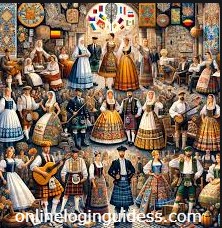
Modern Adaptations of Folklore
Folklore is not just a relic of its past; it evolves. Today, we see a tremendous shift where traditional stories are being redefined. These contemporary interpretations are captivating audiences worldwide. But what does it mean to adapt folklore for modern times?
Examples of Contemporary Interpretations
You might have noticed that many films, books, and theatrical productions draw inspiration from traditional tales. Take Disney movies as an example. They often remix classic stories, bringing new life to them. Think about how Mulan and Moana reinterpret age-old legends while embedding contemporary themes of empowerment and identity. These modern adaptations resonate with younger audiences, making them question and reflect on their own experiences.
- They incorporate modern dialogue, making characters relatable.
- They address current societal issues, such as gender equality and environmental concerns.
Artistic Expressions in Music, Dance, and Theater
Artistic expressions are another vibrant aspect of folklore today. Music, dance, and theater not only tell stories but also preserve traditions. You can find local performances where youth infuse their cultural heritage with fresh styles. Consider the traditional dances from various cultures—they’ve seen a wave of modern interpretations. These new styles blend hip-hop with classical choreography, creating something unique and engaging.
Moreover, music genres like folk fusion take traditional tunes and blend them with rock, pop, or electronic music. This isn’t just adaptation; it’s a celebration of culture.
The Role of Youth in Cultural Practices
You might wonder: how are young people involved in this creative renaissance? They are at the forefront, redefining traditional formats. Through social media platforms, they share their work with a broader audience. This online presence allows for instant feedback and community engagement, something previous generations lacked.
Digital platforms are key here. They showcase art from diverse perspectives and foster collaboration across borders. Young artists no longer have to wait for galleries to showcase their work. They can create their own paths. Think of how a simple TikTok video can go viral, spreading traditional stories in innovative ways.
“Art is the bridge between tradition and tomorrow.” – Local artist
In the case of the Ciulioneros, they adapt their folklore while honoring its core essence. They’re bridging the gap between old and new. By doing this, they not only preserve their cultural identity but also ensure it thrives.
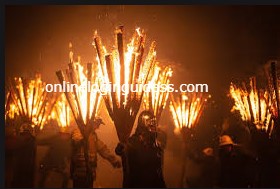
Lessons from the Ciulioneros for Cultural Preservation
The journey of the Ciulioneros is a vibrant story of cultural resilience. Their experience offers valuable lessons for communities grappling with similar challenges of modernization. So, what can you learn from their approach to cultural preservation?
Key Takeaways from Their Experience
One of the most striking aspects of the Ciulioneros’ journey is their commitment to storytelling. They believe that sharing stories is a vital part of preserving culture. Every tale told strengthens their community’s identity. Have you ever shared a family story? It feels good, doesn’t it? It connects generations.
Another key takeaway is the importance of community involvement. The Ciulioneros make every effort to involve young members in their cultural practices. This not only ensures the passing down of traditions, but it also fosters a sense of ownership among the youth. Through their active participation, they become proud carriers of their heritage.
- Document traditions: Keeping a record of songs, dances, and rituals helps create a living archive for future generations.
- Engage with the community: Involve everyone, especially the younger ones. This builds a stronger bond and appreciation for culture.
- Celebrate milestones: Organizing events that highlight cultural practices reinforces their significance in modern life.
Insights for Other Communities Facing Modernization
Modernization can often feel like a tidal wave, overwhelming traditional practices. However, the Ciulioneros demonstrate that it is possible to embrace modernity while honoring tradition. Are you facing a similar challenge? Determine what aspects of your culture resonate with your community. Adapt them while still keeping the core essence intact.
Change does not have to mean loss. It can be an opportunity for growth. By sharing their methods, the Ciulioneros inspire other communities to explore their own paths to cultural preservation.
Fostering Pride in Cultural Identity
At the heart of their lessons is the importance of pride in cultural identity. Pride fosters resilience. The Ciulioneros continuously celebrate their rich heritage through festivals, art, and education. As one cultural preservation advocate put it,
“Preserving culture is not just a task, it’s a legacy we carry forward.”
This sentiment challenges you to reflect: what legacy do you want to pass on? Cultivating pride in cultural identity can inspire not only individuals but communities as a whole. Encourage others to join in this journey. What stories can you share? What practices can you uphold?
By learning from the Ciulioneros, you hold the power to influence your own community’s journey toward preservation. In this evolving world, your heritage can be a source of strength and enrichment.

Conclusion: The Future of Folklore in a Modern World
We’ve journeyed through the rich tapestry of Ciulioneros, uncovering the threads that bind cultural tradition and modern life. As we conclude, let’s reflect on a few key points. Cultural heritage is more than just history; it’s a living entity that evolves with us. It reflects our values, beliefs, and collective identity.
One of our primary realizations is that traditions serve as anchors in a fast-paced world. They ground us, providing a sense of belonging and continuity. For example, consider how festivals bring communities together. They inspire joy and foster connections among diverse groups. But what happens when these traditions fade away? Can we afford to lose the stories of our ancestors? A modern world without folklore would be like a garden without flowers—colorless and lacking vitality.
Why Cultural Heritage Matters
Our cultural heritage holds immense value. It teaches us resilience. As we embrace technology and globalization, we must also cherish the roots from which we came. Folklore enriches our lives, offering lessons on creativity, cooperation, and the human experience. Each tale passed down from generation to generation holds wisdom that we can tap into, shaping our current perspectives and future actions.
Furthermore, this brings us to a vital point: the responsibility we all share. It’s essential for you to engage with and support local traditions. Attend community events. Participate in storytelling sessions. By doing so, you don’t just honor the past; you actively shape the future of folklore. Our efforts today will dictate what remains for future generations.
“The future of our traditions relies on how diligently we nurture them today.” – Community elder
As we step into the future, remember the legacy of the Ciulioneros not just as a tale of survival but as a beacon of cultural resilience. Let this be your call to action. Engage with your community, encourage local storytellers, and help preserve these vital traditions. Starting today, you can be a part of a larger movement that celebrates our rich, cultural heritage.
Ultimately, the narrative of our lives is interwoven with folklore. As we nurture it, we ensure that the vibrant stories of our past do not fade, but instead thrive in the future.





